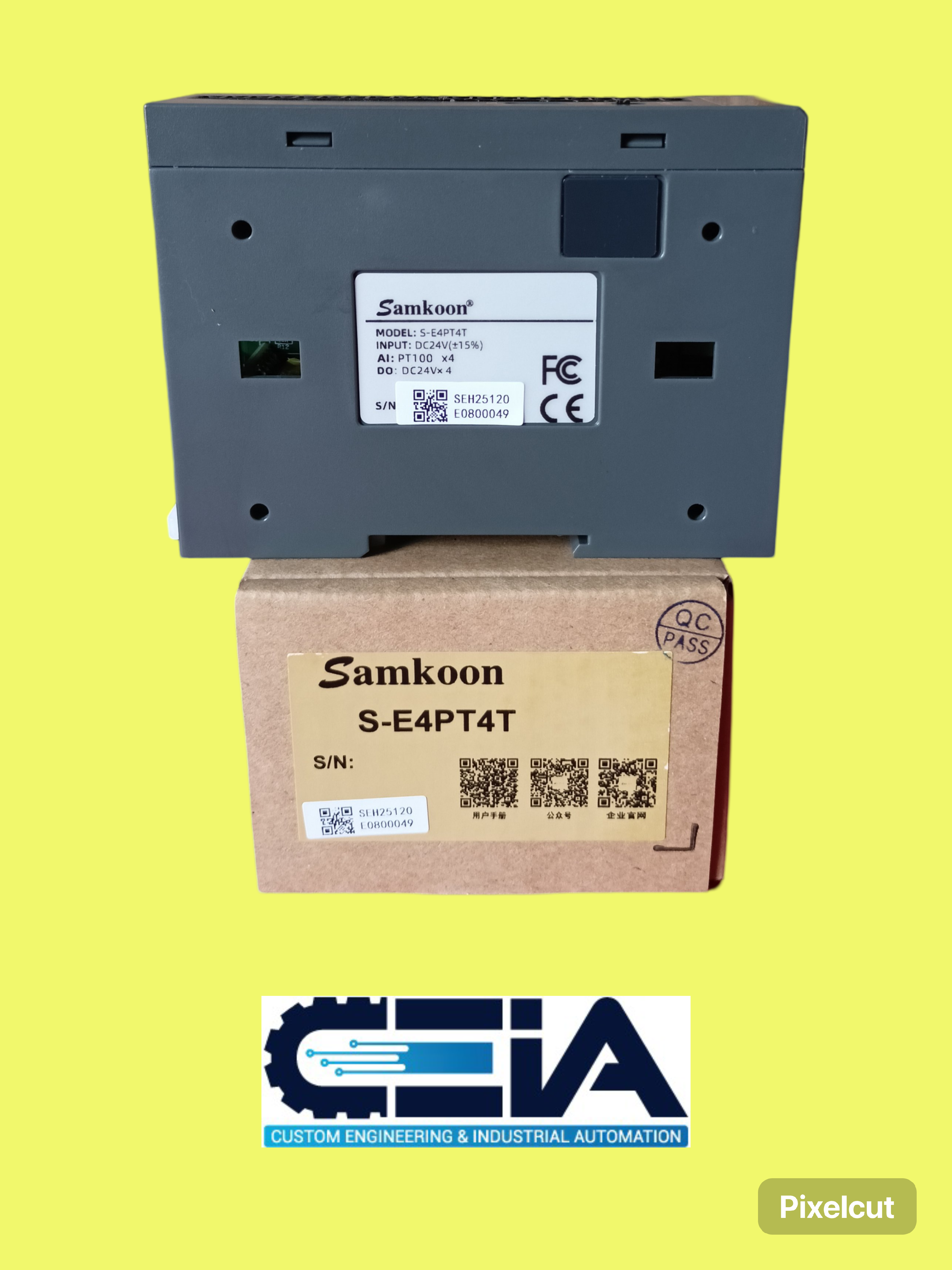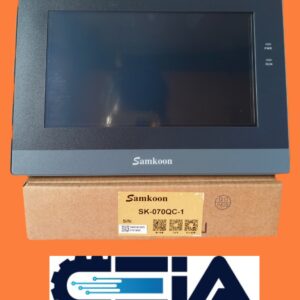Description
The Samkoon S-E4PT4T is a specialized industrial automation module designed
for temperature measurement and control, likely part of Samkoon’s PLC or I/O module series.
Below is a structured overview based on typical features of such models and the naming
convention:
Key Specifications:
• Temperature Inputs (PT):
▪ 4 channels for PT100/PT1000 RTD (Resistance Temperature
Detector) sensors, commonly used for precise temperature measurement
in industrial settings.
▪ May support 2-wire, 3-wire, or 4-wire RTD connections to minimize
measurement errors.
Temperature Control Outputs (4T):
▪ 4 transistor (solid-state) digital outputs (e.g., 24V DC) for
switching/controlling devices like heaters, relays, or contactors based on
temperature feedback.
▪ Some models may include analog outputs (e.g., 4–20mA) for proportional
control.
• Resolution: Typically 12–16 bits for accurate temperature readings.
• Communication: Likely supports RS-485/Modbus RTU for integration with
HMIs, SCADA, or PLCs.
• Power Supply: Standard industrial voltage (e.g., 24V DC).
Applications:
• Temperature monitoring and control in industrial processes (e.g., furnaces,
boilers, HVAC systems).
• Environmental chambers, food processing, or chemical reactors requiring precise
thermal management.
• Integration with Samkoon HMIs for real-time temperature visualization and
alarms
Installation & Wiring Tips:
• RTD Wiring: Use shielded, twisted-pair cables for PT100/PT1000 sensors. Ensure
proper wiring (3-wire or 4-wire) to compensate for lead resistance.
• Output Loads: Verify transistor output ratings (e.g., max current/voltage) to
avoid overloading.
• Noise Mitigation: Separate temperature sensor cables from power lines to
reduce interference.
Configuration & Software:
• Configure input types (PT100 vs. PT1000) and temperature ranges via
Samkoon’s SAMS3 HMI software or PLC programming tools.
• Set up alarms, PID control loops, or output logic for automated temperature
regulation.
Troubleshooting:
• Inaccurate Readings: Check sensor wiring, calibration, and configuration (e.g.,
correct RTD type selected).
• Output Failures: Verify load compatibility and ensure outputs are enabled in
software.
• Communication Issues: Confirm Modbus address settings and cable integrity.
Recommendations:
• Refer to the official Samkoon S-E4PT4T datasheet for exact specifications (e.g.,
input types, output ratings, and communication protocols).
• For legacy models, contact Samkoon support or distributors for firmware updates
or replacement options.
• Consider pairing with Samkoon HMIs (e.g., AK or ST series) for seamless
temperature monitoring and control.











Reviews
There are no reviews yet.